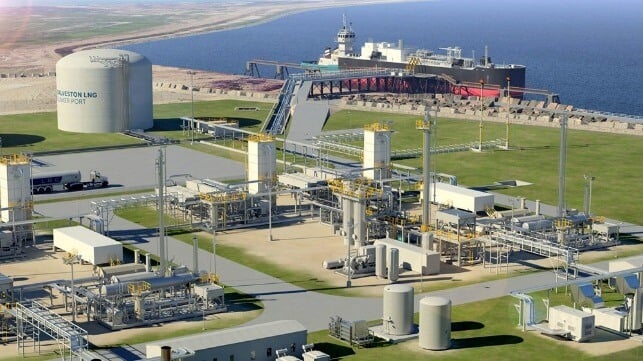Final Construction Permits Issued for First Gulf Coast LNG Bunker Port

The Galveston LNG Bunker Port is now fully permitted for construction to start after receiving authorization from the U.S. Army Corps of Engineers and a recommendation from the U.S. Coast Guard. The project, which is being developed as the first LNG bunker port on the Gulf Coast, is advancing to a financial investment decision from partners Pilot LNG and Seapath Group, a Libra Group subsidiary.
To be located on the Texas City Ship Channel in the Texas City industrial area, and will supply LNG by fuel barge to the rapidly expanding fleet of LNG-fueled vessels in the greater Houston-Galveston region. According to the partners, the bunker hub will be optimally located to serve major ports, including Port Houston, the Port of Galveston, and the Port of Texas City.
The plan calls for the terminal to be developed in two phases. The first would involve a 140-acre site and will target an initial capacity of 360,000 gallons per day. The companies are targeting the second half of 2027 for the initial product deliveries. A second phase would require an additional eight to 12 months and provide a total capacity of 720,000 gallons per day. It will be supported by two 3-million-gallon storage tanks.
“After several years of challenging and complex work bringing together the engineering, permitting, and third party supplies for gas and power to the project, we are now comfortably ahead in the marketplace to be the first dedicated LNG marine fuels supplier in the U.S. Gulf,” said Josh Lubarsky, President of Seapath Group. “We have made a significant financial commitment to this project and, over the course of the last several years, have positioned GLBP to be the foremost clean fuel supply hub in the Galveston Bay/Gulf region.”
The project, which is expected to cost more than $300 million, had received the necessary authorization from Texas earlier this year. Currently, LNG is being supplied by JAX LNG located in Jacksonville, Florida. It has a capacity of 360,000 gallons per day and is supplying LNG to the ports in South Florida as well.
